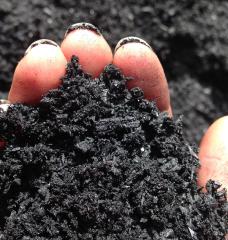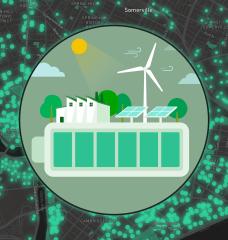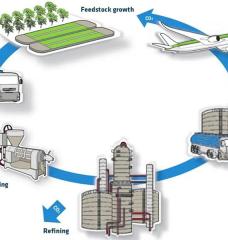Description
This week, the Climate Conversations team are joined by MIT Professor of Materials Chemistry, Don Sadoway.
In this fascinating discussion, we explore extreme electrochemistry, Don’s novel efforts to cut the carbon footprint of steel, his liquid metal battery for grid-scale storage, and the great things you can do simply by understanding some basic chemistry.
If you’re enjoying our Climate Conversations podcast, you can subscribe on your favorite podcast platform to hear the latest episodes first. Find us on:
Transcript
[00:00:00:01] DON SADOWAY: If you want to make something dirt cheap, you make it out of dirt, and preferably dirt that's locally sourced. So the batteries in India should be made with Indian resources, in a manufacturing plant in India, staffed by Indian people, so that way they become authors of their own future.
[00:00:19:12] RAJESH KASTURIRANGAN: This is Climate Conversations, a podcast by ClimateX, the online community building a movement to solve our climate crisis. Welcome to Climate Conversations. I'm Rajesh Kasturirangan, here on a crisp day in Cambridge. And in this room I have--
[00:00:34:22] LAURA HOWELLS: Hi, I'm Laura Howells. I'm a part of ClimateX. And I'm joined by--
[00:00:39:06] CURT NEWTON: Curt Newton, also part of ClimateX, and with the Office of Digital Learning.
[00:00:43:18] RAJESH KASTURIRANGAN: And today, in a few minutes, we'll have Professor Don Sadoway, a pro chemist and car enthusiast.
[00:00:51:24] CURT NEWTON: Yeah, there's a lot going on with Professor Sadoway. I first got to know him 10 years ago through working with OpenCourseWare, producing a really amazing version of his freshman introduction to chemistry class. And he's an incredible lecturer. He's an inspiring person to his students.
[00:01:11:23] His lab does some really interesting research on things like grid-scale storage. The name of his lab, Group Sadoway, they call it, Extreme Electrochemistry. So I'm going to ask him what that's all about.
[00:01:23:17] A few years ago, he did a TED Talk on this grid-scale storage, and the liquid metal battery technology that his lab developed, which has been spun out to a startup company called Ambri. And I think they're getting pretty close to market. What's really interesting, really interesting, and as I think a lot of ClimateX listeners will appreciate, that grid-scale storage is such a critical piece of moving our power system towards renewables. So looking forward to learning a little more about how he does what he does.
[00:01:55:07] LAURA HOWELLS: Sounds good. So let's take a listen to the interview, then.
[00:01:58:03] RAJESH KASTURIRANGAN: So we are so happy to have Professor Don Sadoway, chemist, provocateur. And we expect to be having a lightning-fast conversation on everything from storage to mining and all topics in the middle.
[00:02:15:26] DON SADOWAY: Thank you. Pleasure to be here.
[00:02:18:15] RAJESH KASTURIRANGAN: So how did you get to be a chemist?
[00:02:21:29] DON SADOWAY: I think, when I was in high school, of all the subjects that I was exposed to, chemistry piqued my interest more so than any of the others. And then when I went off to college, I very quickly came to realize that I did not enjoy organic chemistry. So I migrated over to metallurgy, which at that time was starting to evolve into, more broadly, material science.
[00:02:49:15] And of all the professors at the University of Toronto in material science, metallurgy, there was this one who towered over everybody else, in terms of intellectual capability and so many other features that made him a fabulous mentor. And his field was high-temperature electrochemistry. So, you know, if his specialty had been ceramics, well, you might have been talking to a ceramist today. But anyway, so that's how I got here.
[00:03:17:12] CURT NEWTON: The tagline on your group's website says Extreme Electrochemistry. What's that mean? What is extreme?
[00:03:24:00] DON SADOWAY: So "extreme electrochemistry" means electrochemistry in extreme conditions. So I've already alluded to high temperatures. So it's not aqueous. I mean, you know, water is for play. You know, I don't work in water.
[00:03:38:20] RAJESH KASTURIRANGAN: So what kind of temperatures are we talking about?
[00:03:40:15] DON SADOWAY: Oh, 1,500 degrees Centigrade, up to 2,000, 2,200. So for example, if I want to make steel, so I'll start with iron oxide, derived from iron ore. Normally it takes about half a ton of carbon to make a ton of steel. And steel is the number-one anthropogenic source of CO2, 1.8 billion tons of steel per year. And it's all blast furnace production.
[00:04:10:17] So imagine a process in which you've got electricity being generated by sun or wind, and then those electrons are converting iron oxide into steel. And instead of making CO2 as a byproduct, you make two thirds of a ton of oxygen for every ton of iron. So instead of making a liability, you make an asset. Now you have industrial oxygen, which has value.
[00:04:36:07] CURT NEWTON: Let me put that in context a little bit, what you just talked about. Sounds really cool that we're taking direct, renewable-generated energy and making stuff out of it. Is anybody doing that out in the field, though? Or is this all conceptual still, or lab stuff?
[00:04:53:10] DON SADOWAY: It's something that I've been working on. And about three years ago, I formed a company. Thought it was time to do this. And we've designed and built a reactor that runs at about 10,000 ampere. So this is not little beaker on the lab bench. This makes hundreds of kilograms of metal.
[00:05:14:10] And we've demonstrated the production of various ferral alloys. But, like, the conventional industry views this with puzzlement. And I think that what will happen is that disruption in the industry will come from outside the industry.
[00:05:28:27] RAJESH KASTURIRANGAN: Since we are, after all, a climate conversation, how does this tie in to climate change? And how does this basic electrochemistry address some of the big issues that we all care about?
[00:05:41:14] DON SADOWAY: So the electrochemistry here in metal production attacks the central issue of the use of carbon as the reducing agent. So most of these metals are found in the ground as oxides, and you've got to convert the oxide to metal. And carbon is the most favored reducing agent.
[00:06:00:17] And so, for example, it takes about a half a ton of carbon to make a ton of steel, and a blast furnace takes about a half a ton of carbon to make a ton of aluminum in the Hull cell. And so right now, the world capacity for steel is about 1.8 billion tons. And when you make a ton of steel, you make about two tons of carbon dioxide. So we're really making about 4 billion tons of carbon dioxide from world steel industry.
[00:06:25:20] And please don't be dissuaded by these publications of, well, there's all this recycled steel, and electric arc furnaces, and so on and so forth. That's true. But the world demand for steel requires more than just recycling steel. The demand for steel is far greater than that which we can acquire by recycling.
[00:06:49:19] And that's why the capacity for virgin metal, metal from dirt, is 1.8 billion tons. And so if that process could be displaced by a process that, instead of using carbon and then emitting carbon dioxide, if instead it uses the electron as the reducing agent, and we know that the electron can be generated by burning fossil fuel, but it can also be generated by wind, sun, hydroelectric, nuclear. These are all carbon-free. And I know some of these have different meanings for different people, but let's just stipulate that it is possible to get carbon-free electrons. You cannot get carbon-free carbon.
[00:07:35:02] CURT NEWTON: So this is a really big deal, isn't it? And one that I don't hear people talking about very much.
[00:07:40:28] DON SADOWAY: Well, people don't talk about-- this is heavy metallurgy. People are interested in tiny. And I'm not interested in nano. Nano, for me, is too small. Some people love dealing with tens of atoms. I want to deal with tons of atoms. And you know, societal problems are not going to be solved by tens of atoms.
[00:08:01:25] CURT NEWTON: Yeah. If we get you and the concrete folks, you know, in a one-two punch. There's a lot of infrastructure stuff to deal with around carbon emissions, isn't there?
[00:08:13:08] DON SADOWAY: That's correct. That's correct. And that's why I'm drawn to this. I mean, I was drawn to it-- you know, full disclosure, I was drawn to it because as a student, I was inspired by this individual who happened to work in electrochemistry, and it was non-aqueous electrochemistry, so here I am. But over time, this non-aqueous electrochemistry has taken on greater significance, because of the environmental benefits that it can offer. And that has been a source of encouragement for me.
[00:08:42:15] RAJESH KASTURIRANGAN: So we know that you're fascinated by cars. How come?
[00:08:47:03] DON SADOWAY: Well, I grew up in a town called Oshawa, Ontario. It's about 35 miles east of Toronto. And it is the Detroit of Canada.
[00:08:55:12] And around 1994, I think it was, I was teaching a class here at MIT with several other faculty. They were doing a class on-- it was role-playing for technology and policy. And there were 32 students divided into four groups of eight.
[00:09:15:05] And the assignment for that semester was how to address air quality in the Los Angeles basin. And at the time, California Air Resources Board had put out this mandate that by 1998, something like 10% of all cars have to be all-electric, and so on. Nobody had an electric car yet, but they just said, you have to build these things.
[00:09:35:26] And so they asked me if I would give some lectures on batteries. And I wasn't working on batteries at the time. So I did some research. I knew some electrochemistry, and I gave the lecture on batteries.
[00:09:47:10] Then they said, give us another lecture on the environmental consequences of metal production, so that if we have an aluminum-intensive vehicle, is the emission of carbon dioxide and whatnot from an aluminum smelter worse than what you'd get from a steel mill, so that by making a lighter car, all you're doing is shifting where the emissions come from? So I gave some lectures on that.
[00:10:11:11] So this is a really interesting story. As a result of that, we got invited, four of us, to go to Ford. And they had built an all-electric car.
[00:10:20:12] CURT NEWTON: What year was this?
[00:10:21:06] DON SADOWAY: '94. And they were using sodium sulfur batteries. And those batteries were actually invented at Ford in 1966, and then nobody knew what to do with them, because gasoline was $0.20 a gallon, so who needed batteries?
[00:10:38:00] So I drove this car. And they put a governor on it, so you couldn't go faster than 72 miles an hour. But that thing, it was fast.
[00:10:46:25] And so I got back, and I realized the only reason that car is not out on the road in large numbers is the battery. Everything else is there. They have all the technology but the battery, because this sodium sulfur battery runs at 325 degrees Celsius. And it needs to be babied, because if it freezes, and so on, there's all kinds of damage it will accrue.
[00:11:09:28] And so I got back to MIT and I looked in the mirror and I said, well, you're an electrochemist. Why don't you do something about it? So I started working on batteries.
[00:11:17:14] RAJESH KASTURIRANGAN: So where are we going with batteries today?
[00:11:20:07] CURT NEWTON: Yeah, I'm curious about the grid side of this, because we've had a number of conversations about transitioning our power supplies, and I know you've done a lot of work on grid-scale storage as well.
[00:11:32:20] DON SADOWAY: Yeah, so the grid-scale storage effort began around 2005. Susan Hockfield had become president of MIT, and one of her major initiatives was going to be energy. And they had a planning council. They had two planning councils. One was planning for research, and one was planning for education.
[00:11:52:23] And one of my colleagues came to me after a planning session, and he said, you know, one of the big challenges that nobody has any idea how to get their arms around is grid-level storage. You know, you've done all this work in high-temperature metallurgy, and you ever learn anything in that that might be of value to grid-level storage?
[00:12:18:11] And then he left my office. So I started thinking about it. And staring at a image of an aluminum smelter, it runs 24/7, consuming vast quantities of electricity. And yet you make virgin metal for $0.50 a pound.
[00:12:35:23] So I looked at that and said, man, if I could figure out a way to teach that thing to not consume electricity, but to hold it and then give it back on demand, I'd have something that was big and cheap. Everybody else was looking at batteries that are in their phone, and trying to figure out how to make them 1,000 times bigger. And I said, I'm thinking about a storage device. It doesn't have to be a right circular cylinder.
[00:13:04:15] And so people were asking the wrong question. And so that's how I got into the whole business, and eventually conceived of the liquid metal battery, and then the research really took off from there.
[00:13:17:24] Now, there's still work to be done on the automotive propulsion, because I think that lithium ion, it's the best that we have right now. But we need to get a car on the showroom floor at the same price point as the gasoline-powered version of the same thing.
[00:13:38:07] And the batteries today fail on two counts. Number one is that their range isn't what it needs to be. Now we're starting to see cars that are, at least on day one, giving you 200 miles of range. But we all know from the behavior of our phones and our computers that on day 301, it's not going to go 200 miles, because the capacity fade kicks in.
[00:14:04:22] And so that's the second point, which is the service lifetime. You know, the average ownership of a car in the United States today is in excess of eight years. People aren't trading their cars every three years the way they did in the '60s. They get a new phone every two years. They get a new laptop about every three or four. So you don't really wait until the battery is a paperweight.
[00:14:29:11] But if you're going to keep a car eight, 10 years, you're going to be really unhappy in those late years, because your range is going to be unacceptably low. And you say, well, I got a warranty, and we're just going to rip the battery out. Well, it's not like changing the lead acid battery that's sitting right up top under the hood. It's buried deep inside, with all sorts of structural members around it, so that if there is an impact, that all of this is impact-absorbing, so that the battery takes a much-blunted strike. So now to get in there, to change those batteries, phenomenally expensive.
[00:15:10:08] So there's room there for something. Plus, there's the supply chain. I mean, you look at where lithium comes from. Well, there's plenty of lithium on the planet, but it's maldistributed.
[00:15:21:25] But now, for the positive electrode, we're looking at things like cobalt oxide, and that comes from Congo. And the mining conditions are unsavory. There's child labor. There's all sorts of things that, if people understood what that supply chain looked like, they might put their phones down. So why not invent just something that's even better?
[00:15:43:29] RAJESH KASTURIRANGAN: So tell us, like, in your imagination, what a completely different manufacturing cycle might look like. We've covered energy sources. We've covered mining. We've covered automobiles and mobile phones, so some of those central artifacts of modern society. So if you could do it over from scratch, what do you think you would do?
[00:16:10:08] DON SADOWAY: Well, I would enunciate the principles that I give to my students and postdocs, and that is that you want to make something-- if you want to make something dirt cheap, you make it out of dirt, and preferably dirt that's locally sourced. So that batteries in India should be made with Indian resources, in a manufacturing plant in India, staffed by Indian people, so that way they become authors of their own future. So from my perspective, I would look at ways of making things much more local, and therefore at some level, more controllable, because you're not relying on something coming from a great distance.
[00:16:55:04] CURT NEWTON: If you could say a few words about your role here at MIT as a teacher and as a person who has inspired a large number of students, what have you learned about teaching and instilling some of the core values that you think are most important?
[00:17:10:06] DON SADOWAY: Well, for me, the teaching was always a draw. I had the chance to teach this big freshman chemistry class, and quickly realized that there's much more going on than the lessons of the rudiments of chemistry. This is the first semester away for the students, big changes for them. For many of them, it's-- they're unmoored.
[00:17:33:20] And so I realized that this was a required class. 95% of the people in that room didn't want to be there. And so I had to think of ways to hold their attention, because they're smart, but they're just not interested in chemistry.
[00:17:51:03] And so I started thinking about ways to engage beyond just the chemistry lessons. So I turned the class from a chemistry class into a chemistry-centered class. So it was all the chemistry was there, but then I decided to bring in art, literature, and music, and so on, and in a way to sort of hook them.
[00:18:12:19] And I enjoyed that myself. So I learned a lot from that whole enterprise, plus I learned a lot of chemistry, because times had changed, and the subject matter had gotten richer and richer. I mean, back in the '80s, when I first started teaching recitation, we didn't do anything on polymers. Polymers had really surged in the '80s and '90s. So now I've got to get some polymers in there.
[00:18:39:06] And the other big change was the life sciences. So I've got to get life sciences. And I'm going to need five, six more lectures. But I can't have five or six more lectures. So I have to figure out ways to make the delivery of the preexisting subject matter more efficient.
[00:18:57:27] It's not just give them handouts, or write quickly, or put a bunch of slides up faster than persistence of vision and hope that they retain something. You had to make things that are going to be learned. And those exercises deepened my understanding.
[00:19:16:00] And I can honestly say that research that we've been talking about, the liquid metal battery and how I chose the metals for the top electrode and the bottom electrode, they didn't come from advanced chemistry density functional theory computational material science. They came from my knowledge of freshman chemistry.
[00:19:33:29] CURT NEWTON: Yeah, I think that's really inspiring, to see the way that that gets woven through, and people can see, hey, I can put this science that I'm learning here to, you know, deep service of society. It's a powerful message.
[00:19:46:21] RAJESH KASTURIRANGAN: So we come to our final question of the day. We call it the magic wand question. So if you could wave a magic wand and make the world better, in any fashion that you choose, but it should impact climate change in a good way, what would you do?
[00:20:04:09] DON SADOWAY: I think the number-one thing I would work on is electrification, sustainable electrification. The number one thing is, to my mind, education. And the key to education is electrification.
[00:20:18:13] There's a really nice biography of Lyndon Johnson. Lyndon Johnson started out as a schoolteacher in rural East Texas. East Texas was one of the last places to be electrified.
[00:20:30:04] And there's this family that goes into town, and they're on the way back, and all of a sudden, the electricity has come on for the first time. And I guess all the lights were in the On position. And when they were approaching, they thought the house was on fire.
[00:20:45:05] And then finally, they go inside the house and they realize, they can read. It's after dark and they can read. And that's the power of electricity.
[00:20:57:18] CURT NEWTON: That would be a great magic wand. I think you got a lot of people who would agree with you on that one.
[00:21:02:13] RAJESH KASTURIRANGAN: Well, Professor Sadoway, thank you so much for sharing your thoughts and waving your wand.
[00:21:07:05] DON SADOWAY: OK. My pleasure.
[00:21:08:14] RAJESH KASTURIRANGAN: We hope we'll see you again soon.
[00:21:10:17] CURT NEWTON: Yeah, thank you for being in here.
[00:21:12:07] DON SADOWAY: You're welcome.
[00:21:13:26] RAJESH KASTURIRANGAN: Boy, that was a firehose of information.
[00:21:18:10] CURT NEWTON: I was really fascinated that there's a lot more going on there than just grid-level storage.
[00:21:23:19] RAJESH KASTURIRANGAN: And I was fascinated by how his life was set by that one mentor.
[00:21:29:14] CURT NEWTON: Yeah. I've been talking to my kids, as they're going through college, about keeping their eyes open for those key people. It's not just the subject, I think.
[00:21:37:29] LAURA HOWELLS: Oh, yeah. Absolutely. It's made by who teaches it. I always find that. Like, subjects that I was bad at in school, even if I really, really sucked at it, if the teacher was good, then I would turn up on time every day. Loved it.
[00:21:50:20] CURT NEWTON: Yeah. From what I hear from MIT students, Professor Sadoway is just that type of figure for them.
[00:21:55:24] LAURA HOWELLS: Yeah, he's got a real good reputation on campus.
[00:21:58:12] RAJESH KASTURIRANGAN: Wonderful. Well, talking about key people, our key people are our listeners.
[00:22:03:17] CURT NEWTON: Absolutely.
[00:22:04:28] RAJESH KASTURIRANGAN: And we would love to hear from you.
[00:22:07:13] LAURA HOWELLS: Yeah. If you're enjoying the podcast, we would really encourage you, if you have a spare moment, to subscribe, and leave us a review on iTunes. It's what helps us grow our community and expand and reach more people, which is exactly what we want to do. So please do try and reach out to us that way.
[00:22:22:28] CURT NEWTON: Yeah, tell your friends if you're enjoying what you're listening to.
[00:22:26:11] RAJESH KASTURIRANGAN: You can find us on the web at climatex.mit.edu, on Facebook and Twitter, and our podcast is wherever podcasts are listened to.
[00:22:36:12] LAURA HOWELLS: Absolutely. And if you want to recommend a guest to us, if you'd like to pose a topic that we discuss in one of our podcasts, please get in touch with us climatex_feedback@mit.edu.
[00:22:48:22] CURT NEWTON: We look forward to hearing from you.
[00:22:50:05] LAURA HOWELLS: See you next week.
[00:22:51:05] RAJESH KASTURIRANGAN: Bye.
[00:22:51:23] [MUSIC PLAYING]
Dive Deeper
3.091 Introduction to Solid State Chemistry on MIT OpenCourseWare
Ambri - company developing a grid-scale liquid metal battery
“A battery made of molten metals.” MIT News, January 12, 2016.
“The missing link to renewable energy.” TED Talk, March 26, 2012.






